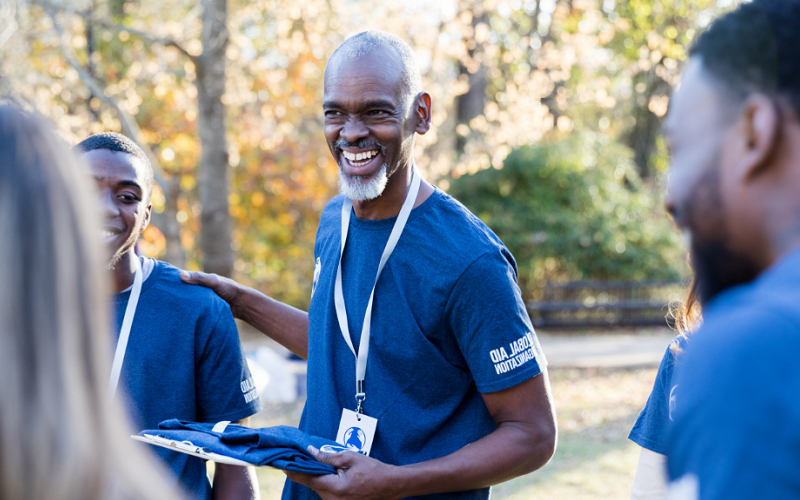
In the heart of every thriving nonprofit lies a dedicated group of volunteers, individuals who generously donate their time and talents to make a difference. However, even with the most passionate volunteers, an organization’s success hinges on how effectively these individuals are trained and engaged. Properly trained volunteers can magnify an organization’s impact, while meaningful engagement ensures they remain enthusiastic and committed to the cause. Here we examine strategies, best practices, and actionable steps to optimize your volunteer management process.
Contents
- Introduction to Nonprofit Volunteers
- Understanding the Needs of Your Nonprofit Volunteers
- Developing a Comprehensive Training Program for Nonprofit Volunteers
- Strategies to Engage Nonprofit Volunteers
- References
Introduction to Nonprofit Volunteers
In the heart of every thriving nonprofit lies a dedicated group of volunteers, individuals who generously donate their time and talents to make a difference. Their commitment is invaluable, but the way they are trained and engaged significantly determines the extent of their contribution.
Importance of Volunteers in the Nonprofit Sector
Volunteers are more than just additional hands on deck; they are ambassadors of a nonprofit’s mission and vision. They bridge the gap between the organization and the community, often serving as the first point of contact for many who interact with the nonprofit. Their passion and commitment can inspire donations, garner support, and influence public opinion. Essentially, volunteers humanize the cause, making abstract goals tangible and relatable.
The Role of Training and Engagement in Retaining Volunteers
For all their intrinsic motivation, volunteers, like all individuals, thrive when they are provided with clear guidance, opportunities for growth, and genuine appreciation. Effective training ensures volunteers have the tools and knowledge to perform their tasks competently, boosting their confidence and enhancing their overall experience. On the other hand, meaningful engagement taps into their emotional commitment, ensuring they remain connected to the cause and feel valued. Together, proper training and engagement not only optimize the volunteers’ contributions but also play a significant role in retaining them for the long haul.

Understanding the Needs of Your Nonprofit Volunteers
Before digging into training and engagement strategies, it’s crucial to step back and gain a comprehensive understanding of your volunteers. Recognizing their motivations, skills, and interests allows for a more personalized and effective approach to management.
Diversity of Volunteer Motivations
Every individual has their own reason for volunteering. Some are driven by a personal connection to the cause, others seek to give back to the community, while yet others might be looking for networking or skill-building opportunities. Understanding these diverse motivations can provide insights into several factors [1].
Tailored Onboarding
Designing an orientation process that addresses varied motivations ensures each volunteer feels seen and valued.
Role Allocation
Assigning tasks or roles that align with a volunteer’s personal motivations can increase satisfaction and performance.
Recognition Methods
Appreciating volunteers in ways that resonate with their motivations can foster long-term commitment.
Identifying Skills and Interests of Potential Volunteers
It’s not just about why they volunteer, but also what they bring to the table. The richness of skills and interests in your volunteer pool can be a treasure trove.
Skill Assessment
Regularly conducting skill assessment exercises can help in understanding the strengths and areas of expertise within your volunteer community.
Skill-Based Assignments
Knowing what each volunteer excels in allows for task allocation that maximizes productivity and minimizes training time.
Skill Development
Recognizing areas of interest can guide in offering further training or workshops that cater to those interests, ensuring volunteers grow while they contribute.
Matching Volunteer Strengths with Organizational Needs
Effective volunteer management isn’t just about recognizing skills and motivations, but aligning them with the needs of the organization.
Strategic Placement
Create a matrix of organizational needs against volunteer strengths. This allows for strategic placement, ensuring roles are filled by those best suited for them [2].
Feedback Mechanisms
Ensure there’s a system in place for volunteers to provide feedback. This can reveal if they feel their skills are being underutilized or if there are areas they’re particularly passionate about that the organization hasn’t tapped into.
Flexibility
Be open to adjusting roles or creating new ones based on the evolving needs of the organization and the dynamic strengths of the volunteer community.

Developing a Comprehensive Training Program for Nonprofit Volunteers
Now that we’ve laid the groundwork by understanding the motivations, skills, and interests of your volunteers, it’s time to channel this knowledge into creating a training program that not only equips them for success but also makes them feel integral to the organization. An effective training program can spell the difference between a disoriented volunteer and a confident one.
Importance of a Structured Onboarding Process
Every volunteer’s journey with your organization begins with the onboarding process. This initial interaction shapes their perception, understanding, and connection to the cause.
First Impressions Matter
A well-structured onboarding shows that the organization values its volunteers and has invested time and resources to ensure they have a smooth start.
Setting Expectations
Onboarding is the perfect time to clearly communicate the organization’s objectives, values, and the role the volunteer will play in achieving them [3].
Building Foundations
Use this opportunity to impart foundational knowledge about the organization, its history, success stories, and key personnel. This ensures that every volunteer is aligned and feels part of a larger mission.
Elements of Effective Volunteer Training
While onboarding sets the stage, continuous training ensures volunteers are equipped to handle their roles with confidence and competence. Here are the main elements to consider.
Orientation Sessions
These are an extension of the onboarding process and delve deeper into the specifics of a volunteer’s role, the tools they’ll be using, and the people they’ll work with.
Skills-Based Workshops
Tailored to the varied interests and strengths of your volunteers, these workshops can enhance specific skills, be it communication, event management, or fundraising techniques.
Mentorship and Peer Support
Pairing newer volunteers with seasoned ones can provide guidance, support, and a direct line for queries and concerns. This fosters a sense of community and belonging.
Incorporating Feedback to Refine Training Over Time
As with all processes, your training program should be dynamic, evolving based on feedback and the changing needs of the organization.
Regular Evaluation
Post-training surveys and assessments can provide insights into what’s working and areas of improvement [4].
Open Communication Channels
Encourage volunteers to share their training experiences, be it through formal channels like feedback forms or informal ones like open-door discussions.
Iterative Improvements
Use the feedback to make regular updates to the training curriculum, ensuring it remains relevant, comprehensive, and engaging.

Strategies to Engage Nonprofit Volunteers
Once your volunteers are effectively trained, the journey doesn’t end there. Consistent engagement is the glue that binds volunteers to the organization, fostering a sense of belonging and ensuring their continued commitment. In this segment, we’ll navigate the pathways to creating an environment where volunteers not only contribute effectively but also feel deeply connected to the cause and the community they serve.
Providing a Sense of Purpose and Belonging
Every volunteer yearns to be more than just a cog in the machine. Recognizing their contribution and making them feel integral to the organization’s journey is essential.
Sharing the Organization’s Mission and Impact
Regularly update volunteers about the organization’s progress, milestones reached, and the tangible impact of their contributions. When volunteers see the results of their hard work, their connection to the cause deepens.
Recognizing Individual Contributions
From shout-outs in newsletters to dedicated appreciation events, find ways to celebrate the unique contributions of each volunteer. Personalized gestures, like handwritten thank-you notes or tokens of appreciation, can make a world of difference [5].
Creating Opportunities for Growth and Development
Just as with any role, volunteers seek avenues for personal and professional growth.
Advanced Training Sessions
Beyond the initial training, offer workshops and courses that cater to evolving interests and provide opportunities to acquire new skills.
Leadership Roles and Responsibilities
Identify and nurture potential leaders within the volunteer community. Offering responsibilities like leading a team or managing an event can be a testament to the trust the organization places in its volunteers.
Building a Community Among Volunteers
One of the most enriching aspects of volunteering is the sense of community it can foster. By nurturing this community spirit, volunteers become part of a supportive network.
Organizing Social Events and Mixers
Beyond work, organize events where volunteers can interact, share experiences, and build friendships. This could be as simple as a monthly potluck or a yearly retreat.
Offering Platforms for Peer Interaction
Create forums, online groups, or chat platforms where volunteers can share stories, seek advice, or simply connect. These spaces can also serve as brainstorming hubs for new ideas and initiatives.
References
[1] 8 Ways to Motivate and Engage Your Nonprofit’s Volunteers
[2] Successful Strategies for Recruiting, Training, and Utilizing Volunteers
[3] Our 8 Favorite Ways to Engage and Retain Volunteers
[4] 7 Ways To Boost Volunteer Recruitment in Your Nonprofit
[5] How to Train, Engage, & Retain Virtual & On-site Volunteers
